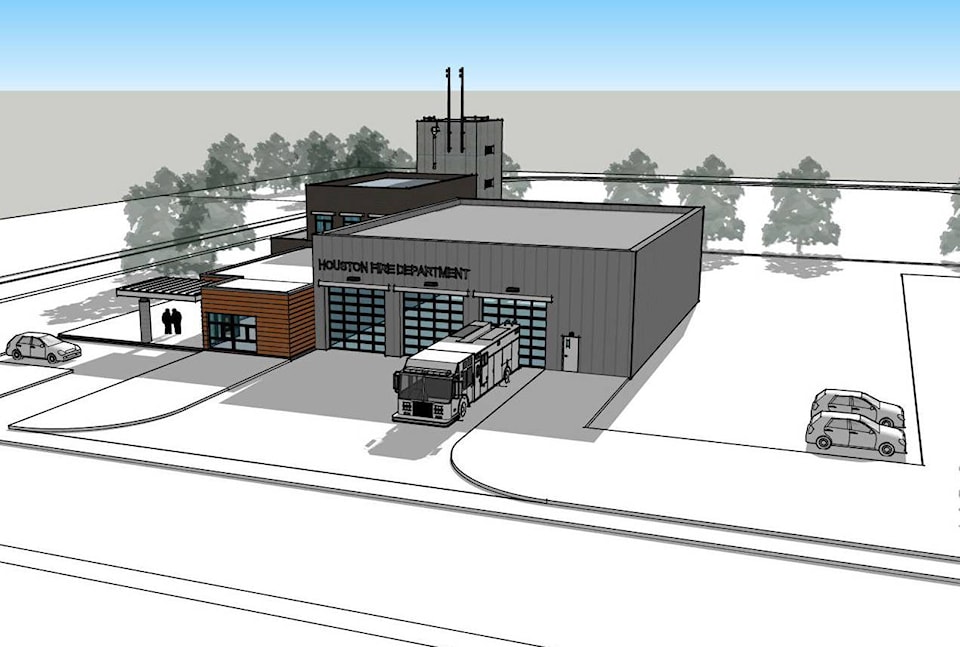A new firehall could cost nearly $9.7 million — more than the $7 million the District of Houston had anticipated — but would result in a state-of-the-art facility to meet the current and evolving requirements of the Houston Volunteer Fire Department.
The projected cost for a new firehall of 13,420 square feet, substantially larger than the current hall’s 8,141 square feet, was laid out in a comprehensive study commissioned last year and released by council July 6.
A number of locations for a new firehall were also examined with consultant Johnston Davidson Architecture + Planning Inc. of Vancouver ultimately recommending the location of the current community hall which itself is scheduled to be replaced.
The site would not need to be rezoned, is already owned by the District and is located close to the downtown core although it is land-locked on three sides and is in front of a school area.
“A building design ‘fit test’ was performed which confirms the recommended firehall building size will fit on the site and can qualify this site as a suitable option, the study stated.
As for the current building, the consultants listed a variety of deficiencies.
“After 56 years in service, the firehall building is facing deteriorating conditions, non-compliance with post-disaster standards and significant programmatic deficiencies despite the best efforts of the fire department,” the report indicated.
“The building has met the end of its respective service life and will need to be extensively upgraded or replaced in order to meet the demands on the fire service today and into the future.
“The existing structure presents several physical concerns ranging from building code issues, seismic capacity limitations, and environmental performance with regards to energy efficiency and requirements of the BC Building Code.”
In terms of construction costs, the consultants calculated a price tag of $8 million based on $600 a square foot for 13,420 square feet, added a 15 per cent contingency amount of $1.2 million and added a five per cent cost escalation amount of $400,000 to come to a projected $9.662 million.
The District has earmarked a firehall replacement over the next 10 years but has yet to assign any money to the project. It has stated, however, that senior government grants will be needed.
A new firehall would have sufficient washrooms for public and staff use, sufficient size bays in which the fire department’s vehicles are stored and sufficient separation between “clean spaces” for firefighters and “dirty spaces” of gear worn by firefighters and other equipment just back from an incident.
“The current standards of best practice for decontamination are not able to be followed due to the current building design,” the consultants noted.
“There is no definite separation of clean and dirty spaces - creating an approach which does not limit exposure to crews and all that visit the hall to contaminants.”
Seven sites were looked at as potential locations for a new firehall with four being rejected for various reasons. That left three sites — the one containing the current community hall which is now the preferred location, where the firehall is now and a collection of single-family lots between 15th and 16th Streets and Poulton and Butler Avenues.
The collection of single-family lots was considered a good size and with easy access to the town centre but its cons were that there would be noise concerns considering the residential area location, would reduce the number of single-family lots available for housing, would require rezoning and the properties would need to be purchased by the District.
The current location was favoured as it is in a good location and is already owned by the District but the other two buildings on the property, used by Houston Search and Rescue and Service BC, would have to be demolished. And a temporary home would have to be found for the fire department.
